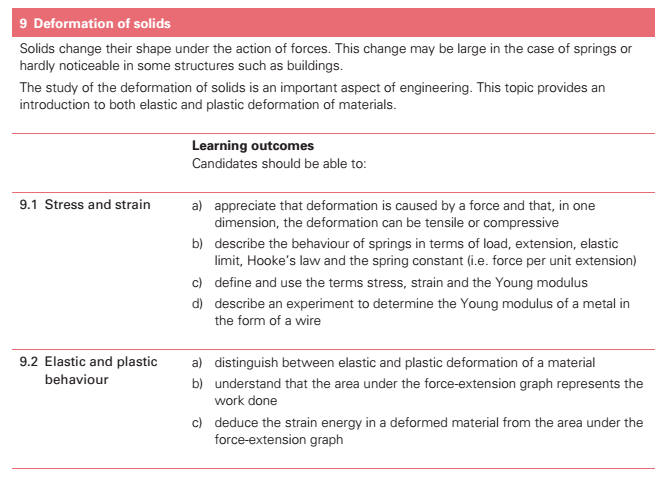
|
|
|
|
(a)
appreciate that deformation is caused by a
force and that, in one dimension, the deformation can be tensile or
compressive.
(b) describe the behaviour of springs in terms of load, extension, elastic
limit, Hooke’s law and the spring constant[] (i.e. force per unit
extension).
(c) define and use the terms stress, strain and the Young modulus.
(d) describe an experiment to determine the Young modulus of a metal in the
form of a wire.
(e) distinguish between elastic and plastic deformation of a material.
(f) deduce the strain energy in a deformed material from the area under the
force-extension graph. (g) demonstrate knowledge of the force-extension graphs for typical ductile, brittle and polymeric materials, including an understanding of ultimate tensile stress. Alpha-particle scattering is studied as evidence for the structure of the
atom. Nuclear composition, in terms of nucleons, leads to an appreciation of
mass defect and binding energy[]. Nuclear processes including radioactive decay,
fission and fusion are studied. An introduction to fundamental particles is
included. |
|
